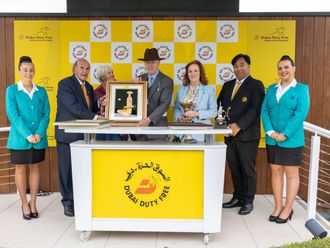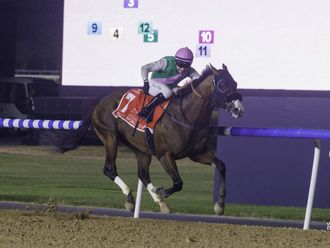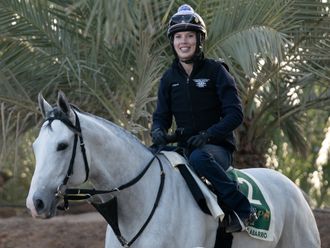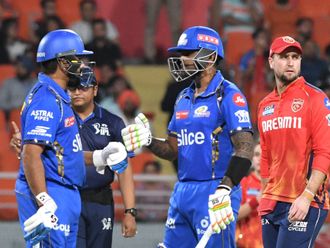Dubai: Behind the scenes, the feeding of racehorses is absolutely critical to make sure that the horse performs to its maximum.
Like many other sports, the athlete’s diet is critical and is constantly evolving to gain the best performance on the day of the competition. With races won by small margins, feeding racehorses with a purpose-built diet could be the difference between winning and losing.
You would not buy a Ferrari to race and put in 95 unleaded fuel and, in the same way, you should not own an expensive horse and feed it poor quality food. Finding a balance is important as high levels of different nutrients can certainly cause health issues to the horse.
The staple diet of a racehorse should be hay and grass and this provides fibre. Each horse should be fed a minimum of 1.5 per cent of its bodyweight per day of fibre. A lack of fibre certainly leads towards gastric ulceration, which is a condition that most racehorses suffer from. Because of the lack of natural grass and grazing, this is more important in the UAE and hay is imported from as far afield as USA and Canada.
High-performance feeds
Traditionally, racehorses were fed hay and oats but that has moved on somewhat with the development of purpose-made high-performance feeds. Horses are fed their morning and evening meals, which are based generally on a mix which balances the energy of cereals such as oats with fattier ingredients such as sugar beet or similar. This is literally the horse’s petrol and another crucial part of the racehorse’s diet.
Feed companies have developed feeds to create the ultimate balance between carbohydrate, fat, fibre, protein and fat.
Horses require a balance in their feeds as too much of one thing could cause a problem. A high carbohydrate diet can cause a horse to suffer laminitis or colic. Also, it is important to include a high-fat content within the diet to prevent the horse “tying-up”, which occurs during exercise when lactic acid builds up in the muscle tissue and can, in extreme cases, cause a horse to set fast.
In these daily feeds, supplements are added ranging from natural additives such as carrots, garlic or seabuckthorn oil as well as other vitamin supplements. Additional vitamins and potions are aimed at priming the horse’s chance of success. Trainers have been known to add Guiness or eggs and locally here dates can also be added.
Water requirements
Along with the food, the water intake can be up to 12 gallons a day depending on the exercise level. Water needs to be well managed and kept clean to keep bacteria out of it to maintain the fitness of the horse.
Within a yard, every horse will be monitored to make sure it has the best diet to produce the best performance. Different horses have different requirements and it is very much the trainer’s job with his team to manage this accordingly. Most racing yards will have a man in charge of feed alone and their job is to make sure each horse receives the best diet possible to suit them. One thing for sure is that all the horses you see tonight will be well fed for success.
The author is a racing journalist, broadcaster and GM of Draiton Feed Commodities
— The author is a racing journalist, broadcaster and GM of Draiton Feed Commodities












